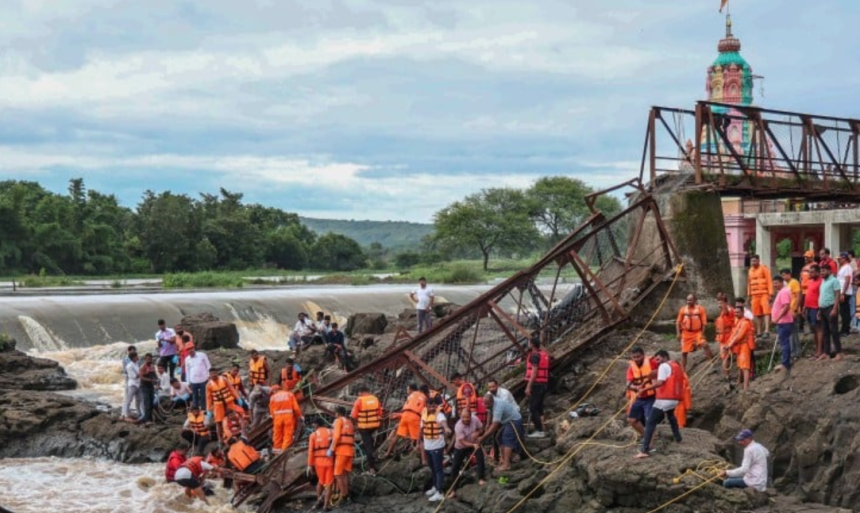A pedestrian iron bridge over the Indrayani River in Pune, Maharashtra, collapsed on June 15, killing at least two people and injuring dozens during the monsoon season. The disaster has raised urgent concerns over infrastructure safety in India’s tourism hotspots.
Collapse Overview
On Sunday afternoon, an old iron bridge in the Kundamala area of Maval tehsil in Pune district gave way under a heavy crowd of tourists, plunging them into the swollen Indrayani River. At least two fatalities were confirmed by Maharashtra Chief Minister Devendra Fadnavis, who stated 32 people sustained injuries, with six in critical condition. Several others were swept downstream.
Rescue Efforts Underway
The National Disaster Response Force has led a large-scale rescue operation alongside local emergency services. So far, six survivors have been rescued, and teams are racing against time to find individuals still missing in the fast-moving river.
Structural Concerns
Preliminary assessments indicate the bridge, overseen by the Pune Zilla Parishad and built around 30 years ago, was in a state of disrepair. Repair work was approved six months ago but didn’t commence before the collapse.
Government Response
Both the Chief Minister and Deputy Chief Minister Eknath Shinde have promised a full structural audit of all river bridges in Maharashtra. Financial relief of ₹500,000 per deceased and medical support for the injured were announced. Shinde also confirmed plans to build a replacement bridge following the accident.
Infrastructure and Safety
The collapse highlights recurring risks in India’s monsoon-affected regions and tourism zones, intensifying calls for timely maintenance and safety reviews—especially on older structures frequently used by local visitors and pilgrims.
What Comes Next
Rescue operations continue, with authorities urging public vigilance at riverside sites during monsoon. The state’s structural audit is expected to guide upgrades and preventive measures to ensure similar structures are safe ahead of peak tourism seasons.
This tragedy underscores the urgent need for proactive infrastructure management, particularly in pilgrimage and tourist areas prone to extreme weather. Structural safety and regular oversight can no longer be delayed.










